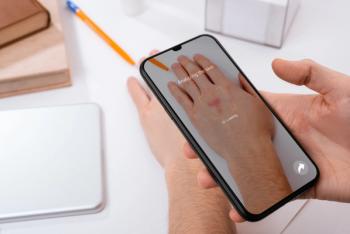
- June 2018 (Vol. 39, No. 06)
- Volume 39
- Issue 6
Skin cancer prevention messaging works (for some)
Studies have shown that melanoma incidence rates among non-Hispanic whites have been rising in recent years, which is true ― to a degree, according to a research letter published in March in JAMA Dermatology. The rates are indeed rising for those younger than 15 years old and older than 45 years old. However, the analysis highlights a big dip in melanoma cases for those between 15-44 years.
Studies have shown that melanoma incidence rates among non-Hispanic whites have been rising in recent years, which is true â to a degree, according to a research letter published in March in JAMA Dermatology. The rates are indeed rising for those younger than 15 years old and older than 45 years old. However, the analysis highlights a big dip in melanoma cases for those between 15-44 years.
The authors, led by Dawn M. Holman, MPH, of the Centers for Disease Control and Prevention, say the drop for the 15-44 year olds may be due to intensive skin cancer prevention programs that were introduced in recent years.
“Although primary skin cancer prevention efforts have often focused on children, adolescents, and young adults, the steady increase in melanoma incidence rates among older adults indicates a need
for efforts that promote skin cancer preventive behaviors throughout adulthood. Such efforts could focus on groups at high risk, such as outdoor workers and intentional tanners. Ongoing surveillance of melanoma incidence is warranted to monitor progress toward national skin cancer prevention goals and guide prevention strategies,” the authors wrote.
The analysis is based on data collected between February 2010 and December 2014 from the Centers for Disease Control and Prevention’s National Program of Cancer Registries and the National Cancer Institute’s Surveillance, Epidemiology and End Results Program.
The authors describe the rising incidence of melanoma among older age groups as “statistically significant.”
The largest drop in incidence came from young adults between 15-24 years old in which the average annual percent change of incidence for both men and women dropped 5.1 percent. The rates of incidence gradually rose among older age groups: -1.7 percent for 25-34 years old; -0.5 percent for 35-44 year olds; .4 percent for 45-54 years old; 1.3 percent for 55-64 years old; 2.5 percent (or, 15,056 individuals) for 65-74 years old; 3.6 percent for 75-84 year olds; and, 4.6 percent for men and women older than 85 years old.
But for the very young â 15 years old and younger â the incidence rate spikes to 1.4 percent affecting 64,991 individuals.
REFERENCE
Dawn Holman MPH, MaryBeth Freeman MPH, Meredith Shoemaker MPH. “Trends in melanoma incidence among non-Hispanic whites in the United States, 2005 to 2014,” JAMA Dermatology. Published online January 31, 2018. DOI:10.1001/jamadermatol.2017.5541
Articles in this issue
over 7 years ago
Melanoma diagnosis by physician or PA not always straightforwardover 7 years ago
Pulsed dye laser fails surgical scarsover 7 years ago
Calming inflammation in common skin conditionsover 7 years ago
The acne supplementover 7 years ago
Cimzia receives positive CHMP opinion for plaque psoriasisover 7 years ago
FDA approves Tafinlar with Mekinist for melanomaover 7 years ago
SPSSCS names Donna Erb new presidentNewsletter
Like what you’re reading? Subscribe to Dermatology Times for weekly updates on therapies, innovations, and real-world practice tips.


















